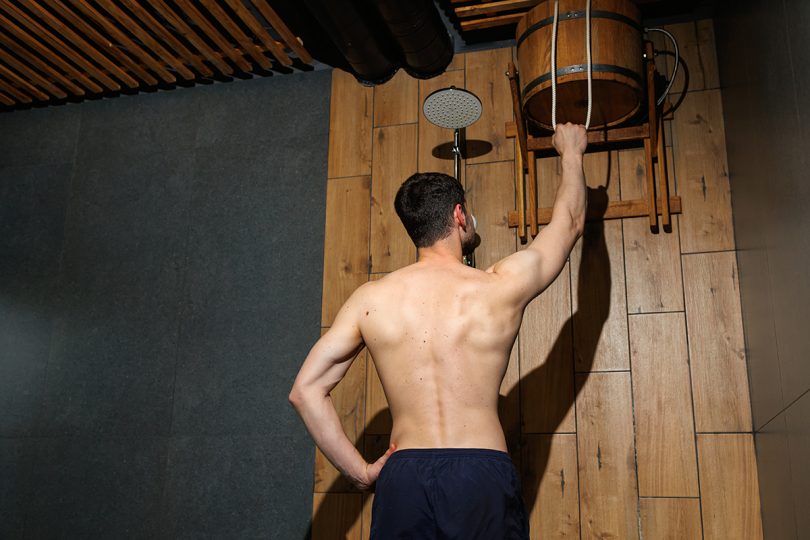As we navigate the complex world of health and fitness, a multitude of approaches to weight loss surfaces. One such unconventional method gaining attention is the ice hack for weight loss. But what exactly is this icy technique? How does it promote weight loss? Is it even safe and effective? This in-depth article delves into the fascinating realm of this cold exposure technique, aiming to shed light on its mechanisms, effectiveness, risks, and benefits.
Table of Contents
- Understanding What the Ice Hack for Weight Loss Is
- History of the Ice Hack
- Principles Behind the Ice Hack
- How Does the Ice Hack Work for Weight Loss?
- Benefits of the Ice Hack
- Scientific Evidence Supporting the Ice Hack for Weight Loss
- Criticism and Controversies
- Potential Risks and Considerations
- Case Studies and Personal Experiences
- How to Implement the Ice Hack for Achieving Weight Loss
- Incorporating the Ice Hack into Your Lifestyle
- Conclusion
Understanding What the Ice Hack for Weight Loss Is
The term ‘ice hack’ refers to the technique of cold exposure therapy, where the body is consistently exposed to cold temperatures to facilitate weight loss. This principle works on the assumption that the human body, in a bid to maintain its core temperature, will burn more calories when subjected to a colder environment.
History of the Ice Hack
While the term ‘ice hack’ might sound modern, the concept of utilizing cold temperatures for potential health benefits isn’t new. From ancient Roman frigidarium baths and Finnish saunas followed by a dip in freezing waters, to Native American sweat lodge rituals, the idea of cold exposure has been explored throughout human history. In recent times, this concept has been revisited and presented as a potential weight loss strategy, paving the way for the ‘ice hack’.

Principles Behind the Ice Hack
The ice hack revolves around two central concepts – the metabolic process of thermogenesis and the role of brown adipose tissue, or brown fat, in our bodies.
Thermogenesis is the process by which our bodies produce heat. This metabolic function is crucial for maintaining our core body temperature. When we expose our bodies to cold temperatures, thermogenesis kicks into high gear, burning more energy to keep us warm. This increase in energy expenditure is the key idea behind the ice hack for weight loss.
The second concept involves the role of brown fat. Unlike regular white fat, which primarily stores calories, brown fat burns energy to produce heat. When exposed to cold, brown fat activates and burns more calories, contributing to weight loss.

How Does the Ice Hack Work for Weight Loss?
The process is straightforward – expose your body to cold temperatures, and it has to work harder to stay warm. This work translates into burning more calories for energy, leading to weight loss. But how does this actually work on a physiological level?
When exposed to cold, your body first uses muscle movement to stay warm – that’s where shivering comes in. Shivering is essentially involuntary muscle movement designed to produce heat and ward off the cold. But shivering burns calories and can contribute to weight loss.
Non-shivering thermogenesis is where brown fat comes into play. When the body is exposed to cold temperatures, brown fat cells kick into action, burning calories to produce heat. The more brown fat you have, and the more active it is, the more calories you can burn through non-shivering thermogenesis.
Thus, the idea behind the ice hack for weight loss is to expose the body to enough cold to activate brown fat and increase energy expenditure, but not so much that you’re uncomfortably or dangerously cold.

Benefits of the Ice Hack
Beyond weight loss, proponents of the ice hack often point out other potential benefits, including improved insulin sensitivity, enhanced mood, better sleep, and increased mental clarity. However, it’s important to note that while some evidence supports these claims, more research is needed to confirm these benefits and to understand how they’re connected to cold exposure.

Scientific Evidence Supporting the Ice Hack
Several scientific studies suggest that cold exposure can indeed increase energy expenditure and promote weight loss. Research has shown that cold exposure can activate brown fat, leading to increased calorie burn. Moreover, other studies have indicated that regular cold exposure might increase the amount of brown fat in the body.
For instance, a study published in the Journal of Clinical Investigation found that individuals who spent two hours a day in a 66°F (19°C) room for six weeks burned more energy than those who spent their time in warmer conditions. This suggests that regular mild cold exposure might help with weight loss.
Despite promising evidence, it’s essential to note that many of these studies are small-scale and preliminary. More comprehensive research is needed to fully understand the effectiveness of the ice hack for weight loss and its potential long-term impacts.

Criticism and Controversies
While there’s some evidence supporting the ice hack for weight loss, it’s not without controversy. Critics argue that the effect on calorie burn might be relatively small and thus may not significantly impact weight loss. Others express concern about potential negative side effects, including frostbite, hypothermia, and cardiovascular stress.
Potential Risks and Considerations
Like any weight loss strategy, the ice hack is not without its potential risks and drawbacks. These include the risk of cold injuries like frostbite, potential cardiovascular stress from the body’s response to cold, and discomfort associated with prolonged cold exposure. It’s also crucial to consider that the ice hack may not be suitable for everyone, particularly those with certain health conditions. As with any new health practice, it’s recommended to consult with a healthcare provider before starting.

Case Studies and Personal Experiences
Many individuals who’ve tried the ice hack report positive experiences, noting not only weight loss but also improvements in energy levels, mood, and sleep. Some also appreciate the invigorating sensation of cold exposure and find it helps reduce stress and enhance mental clarity.
However, others find the cold exposure uncomfortable or don’t notice significant changes despite regular practice. It’s important to remember that personal experiences can vary widely, and what works well for one person may not work for another.
How to Implement the Ice Hack for Achieving Weight Loss
There are several ways to incorporate cold exposure into your routine, ranging from taking cold showers or ice baths to wearing cooling vests. One common recommendation is to start with shorter durations of cold exposure and gradually increase them as your body adapts.

Incorporating the Ice Hack into Your Lifestyle for Weight Loss
While the ice hack could be a potentially effective tool for weight loss, it’s important to remember that it’s just one piece of the puzzle. A holistic approach to health and weight loss, including a balanced diet, regular physical activity, sufficient sleep, and stress management, is crucial. Consider the ice hack as one possible component of your broader health and wellness strategy.

Conclusion
The ice hack for weight loss is a fascinating approach that capitalizes on the body’s natural mechanisms for heat production and calorie burn. While there’s some promising scientific evidence supporting this method, more research is needed to fully establish its effectiveness and safety. As with any new health practice, it’s essential to approach it sensibly, consider potential risks, and consult a healthcare professional if needed. Ultimately, the ice hack may not be a magic bullet for weight loss, but it could potentially be a useful tool within a comprehensive and personalized health and wellness plan.






